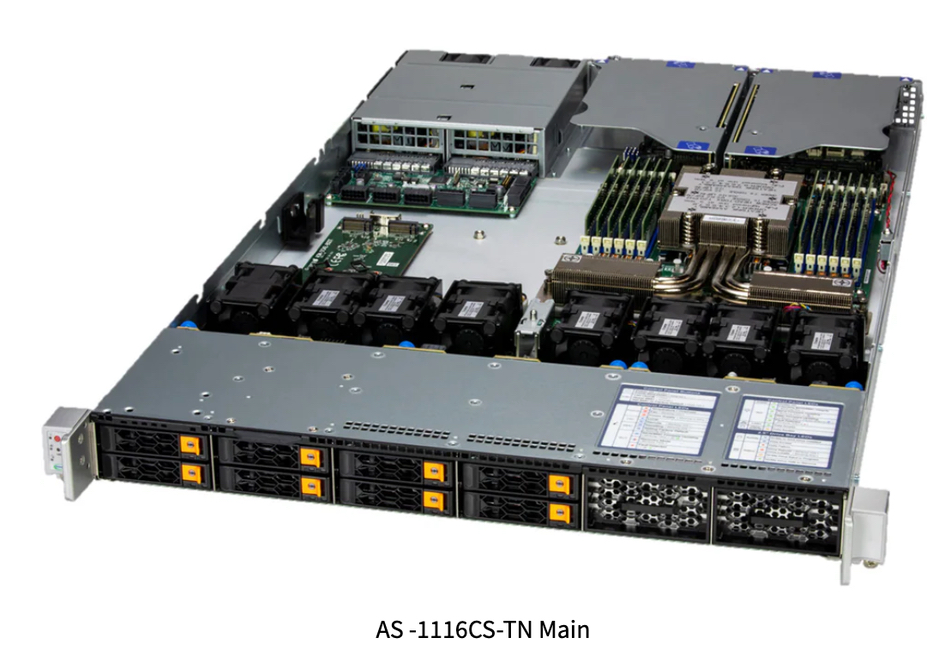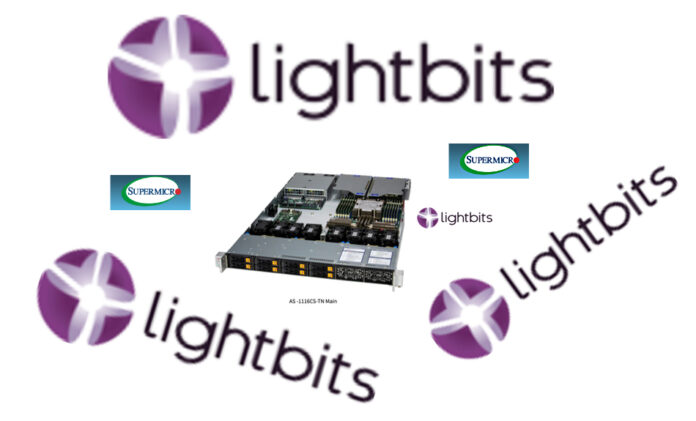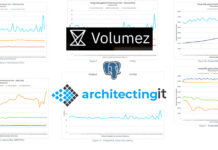Lightbits claims it has demonstrated the fast performing shared block storage for containerized transaction processing in a benchmark validation using Supermicro server hardware.
Lightbits provides disaggregated virtual SAN block storage accessed by NVMe/TCP that runs either on-prem or in the Azure, AWS, or Oracle clouds. In this case, it ran on-prem in a Supermicro CloudDC A+ Server AS-1116CS-TN server. The two benchmarkers have produced a reference architecture covering the deployment of high-performance, scalable Kubernetes server systems using Lightbits with Supermicro and Intel, but not AMD.

Kam Eshghi, co-founder and chief strategy officer at Lightbits, stated: “The exceptional performance validated in our joint testing, combined with our new Kubernetes reference architecture, provides customers with a powerful, flexible, and cost-effective path to modernize their data infrastructure.”
Lawrence Lam, VP, Solutions and Technology, Supermicro, said: “We’ve validated the H14 servers with Lightbits storage and published a reference architecture showing how the combination delivers significant advancements in I/O performance, low-latency responsiveness, and hardware efficiency. This solution enables customers with the highest performance shared block storage for transaction processing and other demanding workloads.”
The benchmark configuration was a server with 1 × AMD EPYC 9575F (64 cores, 128 threads), 768 GB DDR5 (6400 MT/s) memory, a Mellanox MT2910 ConnectX-7 (single-instance) NIC, and 8 × Samsung 3.84 TB NVMe SSDs (PM1743) per server. The OS was Rocky Linux 9.4.
Supermicro and Lightbits say their benchmark shows:
- 3.6 million IOPS for 4K Random Read – good for performance-sensitive applications like financial trading platforms and real-time analytics.
- 1.6 million IOPS for 4K Random Write – needed for logging, journaling, and rapidly updating frequently changing datasets.
- 54.7 GBps for 128K Sequential Read Bandwidth – high-throughput data transfer for workloads requiring large block reads, such as AI/ML training, video rendering, and scientific simulations.
- 16.7 GBps for 128K Sequential Write Bandwidth – suited for applications generating large sequential data streams, including data ingestion pipelines and data warehousing.
The 1RU Supermicro CloudDC A+ Server has a PCIe Gen 5 bus and eight hot-swap NVMe SATA/SAS drive bays. It can support up to eight M.2 NVMe PCIe Gen 4 – not Gen 5 – SSDs with capacities ranging from 400 GB to 3.8 TB, maxing out at 30.4 TB.

Lightbits and Supermicro claim their reference architecture (RA) can “seamlessly integrate Lightbits storage into existing Kubernetes deployments without requiring significant re-architecting and offering a clear upgrade path to software-defined, high-performance block storage” for containerized apps and KubeVirt Virtual Machines (VMs). That indicates some re-architecting is needed. Customers get access to a turnkey, optimized system that “minimizes deployment complexity and maximizes performance from day one for a wide range of use cases such as financial trading platforms, real-time analytics, AI/ML training, e-commerce, data ingestion pipelines and warehousing, and scientific simulations.”
The RA validation used a total of six physical servers – three dedicated to running Lightbits storage nodes, and three configured as Kubernetes control-plane and worker nodes.
Request the reference architecture here. We did this and found from the request webpage that it involved Ceph as well as Lightbits, both of which supply block storage software. The RA doc says: “Ceph offers a resilient and scalable storage solution that is ideal for data-intensive applications requiring traditional file and object storage capabilities… Concurrently, Lightbits introduces a high-performance, software-defined storage layer optimized for NVMe/TCP, delivering low-latency and high-throughput block storage capabilities.” Effectively, Lightbits supplements or replaces the block storage function traditionally served by Ceph, depending on workload requirements.
Lightbits software is now available on the Supermicro CloudDC A+ Server AS-1116CS-TN.
Bootnote
We learned subsequently that there is a second AMD-powered reference architecture. A Lightbits spokesperson told us: “We validated Lightbits on both AMD and Intel platforms to demonstrate versatility across different architectures”:
- AMD (H14): Focused on single-socket setups, using high-core density and efficiency for cost-optimized, high-performance scenarios.
- Intel (K8): Dual-socket setups chosen for their broad enterprise adoption, balanced performance, and compatibility with diverse workloads.
“Each validation serves to highlight flexibility, enabling customers to confidently select hardware that best fits their operational requirements.”
The spokesperson also explained why both Ceph and Lightbits are used in the RA docs: “Combined use of Ceph and Lightbits address complementary storage needs within Kubernetes deployments.”
- Ceph: Designed as scalable, distributed storage for less latency-sensitive workloads, suitable for object, archive, and large-scale data retention.
- Lightbits: Provides high-performance, low-latency NVMe/TCP block storage ideal for demanding Kubernetes workloads, such as transactional databases and real-time analytics.
“Deploying them together creates a comprehensive solution, meeting both the capacity-driven demands and performance-critical requirements within Kubernetes environments.”







